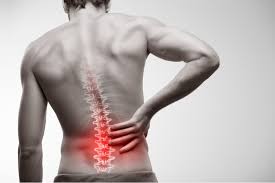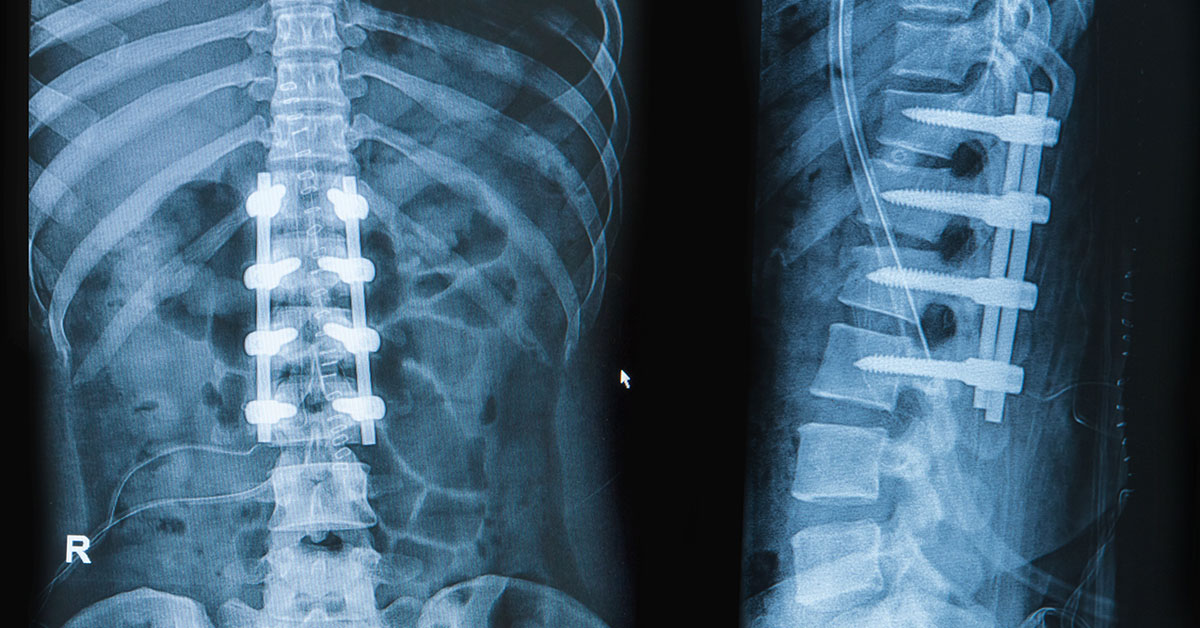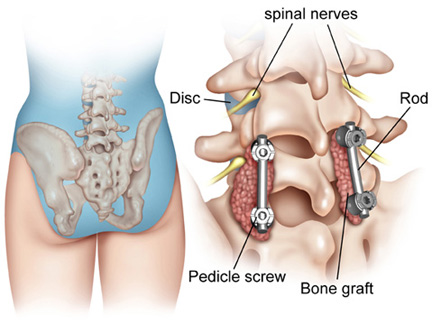Lumbar Interbody Fusion
"To keep the body in good health is a duty... otherwise, we shall not be able to keep the mind strong and clear."
Lumbar Interbody Fusion
Lumbar Interbody Fusion (LIF) is a surgical procedure commonly used to treat various spinal conditions, particularly those affecting the lower back. The lumbar region refers to the lower portion of the spine, which is particularly prone to issues like degenerative disc disease, spinal stenosis, spondylolisthesis, and other conditions that cause instability, pain, or nerve compression. In LIF, the surgeon accesses the spine through an incision in the lower back. The damaged or degenerated disc material between two adjacent vertebrae is removed, creating a space where an interbody implant or spacer can be inserted. This implant is typically made of bone graft material or a synthetic material that promotes bone growth. It helps to stabilize the spine, restore disc height, and alleviate pressure on nerves.

After inserting the interbody implant, additional hardware such as screws and rods may be used to stabilize the spine while fusion occurs. Over time, the bone graft material within the implant fuses with the adjacent vertebrae, forming a solid union that stabilizes the spine and relieves symptoms. Recovery from LIF can vary depending on factors such as the patient’s overall health, the specific technique used, and the extent of the surgery. Physical therapy and rehabilitation are often recommended to help patients regain strength and mobility after surgery.
What are the treatment options for Lumbar Interbody Fusion?
There are several different types treatment available for Lumbar Interbody Fusion.
Treatment options for Lumbar Interbody Fusion (LIF) encompass surgical techniques like Anterior Lumbar Interbody Fusion (ALIF), Posterior Lumbar Interbody Fusion (PLIF), Transforaminal Lumbar Interbody Fusion (TLIF), and Lateral Lumbar Interbody Fusion (LLIF), each offering distinct advantages based on patient needs and spinal conditions. Implants, including cages or spacers filled with bone graft material, aid in stabilizing the spine and promoting fusion, with materials ranging from titanium to synthetic polymers like PEEK. Adjunctive therapies such as bone grafting, biologics like bone morphogenetic proteins (BMPs), and instrumentation with screws and rods bolster fusion and provide immediate stability. Rehabilitation through physical therapy and pain management techniques complement surgical interventions, optimizing recovery and restoring function. Treatment selection hinges on factors like diagnosis, anatomical considerations, overall health, and surgeon expertise, ensuring a tailored approach for each patient.
We are here to help you Get relief from your pain
Get reed of from various body pain from our experienced doctor.


